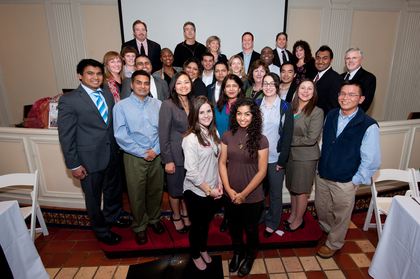
Shifting into High Gear for California Startups
Drew Starbird MBA '84
Entrepreneurship in the U.S. needs a reboot. Recent research shows that business dynamism (the process by which firms are born, fail, expand, contract, and grow) has been on the decline since the year 2000. The business start-up rate is half of what it was in 1978, and the percentage of adults owning a business has been declining steadily for 20 years.
Every year, small businesses create more than 60 percent of new private-sector jobs, and newer companies create more jobs than older companies.
These trends do not bode well for job growth and long-term economic health. New jobs come from new businesses and new businesses come from entrepreneurs. Every year, small businesses create more than 60 percent of new private-sector jobs, and newer companies create more jobs than older companies.
Our country needs to create new companies faster.
Our country needs to create new companies faster. How do we do it? One of the most successful models for launching companies is the seed accelerator, which was developed to train and fund new innovative tech companies in groups rather than one at a time. Accelerators such as Y Combinator, 500 Startups, and Seedcamp have helped launch hundreds of companies, including household names like Dropbox, Udemy, Credit Karma, and Airbnb. One problem with seed accelerators is that they focus on a narrow sector of startups, i.e., innovation-based tech firms with the potential for a successful exit through an IPO or acquisition.
In 2009 the Leavey School of Business at Santa Clara University began an experiment in new business acceleration called the California Program in Entrepreneurship (CAPE). CAPE is based on the seed accelerator model but has a distinctly different goal: to start sustainable businesses that create jobs in California and that reflect the rich socioeconomic diversity of the state.
CAPE incorporates the best attributes of traditional seed accelerators. These include intensive, cohort-based training and dedicated mentors to provide aspiring entrepreneurs with advice from seasoned entrepreneurs. CAPE-propelled entrepreneurs build strong life-long relationships with their cohort, their mentors, and Santa Clara University.

CAPE accelerator graduates 2011
There are, however, a number of important differences between CAPE and the conventional accelerator. First, CAPE admits any team with the capacity for building a successful business—not just innovation-based tech firms. Any business with the potential to grow is welcome to apply. Second, CAPE is focused on finding the path to success, not weeding out companies that won’t go public. The platform creates an environment where businesses can keep pivoting until they find their “secret sauce.” Finally, CAPE allows entrepreneurs to pursue the goals that are important to them. Not every entrepreneur wants to ring the bell at the New York Stock Exchange or buy an island. Some aspire to serve customers well, build strong relationships with employees, and be an integral part of a community. CAPE gives them that option.
CAPE has seen huge success over the past five years, with graduates starting more than 150 businesses ranging from small bakeries to companies leasing underwater drones, and everything in between. Hundreds of jobs have been created, and several companies have been acquired or attracted Angel investment. By successfully launching new businesses in California, Santa Clara’s CAPE accelerator provides a winning model for supporting entrepreneurs nationwide.
May 31, 2016

